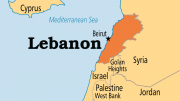In spring 2003, barely two weeks after the invasion of Iraq, one of the earlier columns in this series was perhaps rashly titled “A thirty-year war” (4 April 2003). It was a very pessimistic assessment, which both highlighted the military problems being experienced by American and British forces and suggested that the war would be counterproductive.
The United States was beginning to do the impossible, by increasing the popularity of Saddam Hussein in the region and leading more generally to ”gathering support for Iraq and the Iraqis, based on the firm belief that they are being subjected to a western conquest that will become a long-term subjugation.”
The column continued:
“Already this is attracting radicals to Iraq: it is also a ‘gift’ to al-Qaida and its associates. President Mubarak of Egypt, one of the strongest allies of the United States in the region, talked in Suez of the risk of this war giving birth to ‘a hundred bin Ladens’.”
A week later, the Saddam Hussein regime collapsed, his statue was felled in Baghdad’s Firdaus Square, and the war appeared over almost before it had begun. On 1 May, George W Bush delivered his “mission accomplished”speech, having flown in by warplane to land on the flight-deck of the USS Abraham Lincoln aircraft-carrier off the Californian coast.
Only 19 months after the sheer shock of 9/11, all was surely well or at least heading in a positive direction. The Taliban regime in Afghanistan had been terminated; al-Qaida was both dispersed and diminished; Iraq was subdued; and Iran (part of the “axis of evil” proclaimed by Bush in January 2002) had been isolated. If the notion that the war “may be over within three months or it may take longer: in either case, it has the potential to signal the development of a much more sustained conflict” looked misjudged, the idea of a “thirty-year war” seemed outlandish.
At the time it was reasonable for the many supporters of president Bush and prime minister Tony Blair to be pleased with how the military attacks on Afghanistan and Iraq were turning out. It took around six months for a more nuanced view to emerge. By the end of 2003, the US military and its coalition partners were embroiled in a bitter insurgency in Iraq, and this produced the first real signs of dissent. It would be another two years before the Taliban resurgence in Afghanistan prompted similar concerns, leading to a steadyexpansion in western troops. These peaked at 140,000 troops, more than a decade after 9/11.
Since then the catastrophic wars in both regions have further evolved, and been compounded by the linked if complex wars in Syria. Another regime termination, in Libya, turned out also to be a calamity. In the UK, both Iraq and now Libya have been the subject of substantial inquiries – Chilcot on Iraq and this week’s foreign-affairs committee report on Libya. Both pointed to multiple official failings (see “Chilcot’s Iraq: the missing piece“, 7 July 2016). Yet the policy effect seems minimal. Well over 250,000 people have been killed, in addition to the ongoing disaster in Syria, hundreds of thousands injured, millions displaced, economies wrecked and trillions of dollars spent, yet there is no end in sight.
It is doubtless the case that public opinion in western countries has moved strongly against military occupation by their states, in the process deploying tens of thousands of “boots on the ground”. But such occupations have been replaced by growing “remote warfare“, whose main elements include the intensive use of air-power (now including armed drones), a marked expansion in the use of special forces, and a far greater reliance on private military and security companies (see “The war on terror: an interim report“, 7 April 2016).
What has not changed is the basic “control paradigm” – the use of military force to maintain control. The difference is that so much of what now happens is conducted out of sight with a minimum of debate or even, in the case of the UK, without parliamentary approval (see “Britain’s information-light war“, 25 June 2015). The transition from open to hidden war has been progressive over the best part of a decade. All the indications are that it will go further.
Moreover, there is little sign that it will be any less counterproductive, not least because it is born of an outlook that appears to have little or no understanding of the sustained impact of western military interventions of any kind. As that 2003 column put it: “The end result is a bitterness that will express itself in many different ways in the coming years, not least in the development of further radical and extreme social movements such as al-Qaida.”
This analysis, from more than thirteen years ago, was certainly wrong on detail, as Saddam Hussein’s regime collapsed only a week later. Sadly, though, it was broadly right in its long-term prognosis. As things stand today, there is no reason to revise the timescale. A thirty-year war is still on track.
Source: opendemocracy.net



Be the first to comment at "The thirty-year war: still on track"